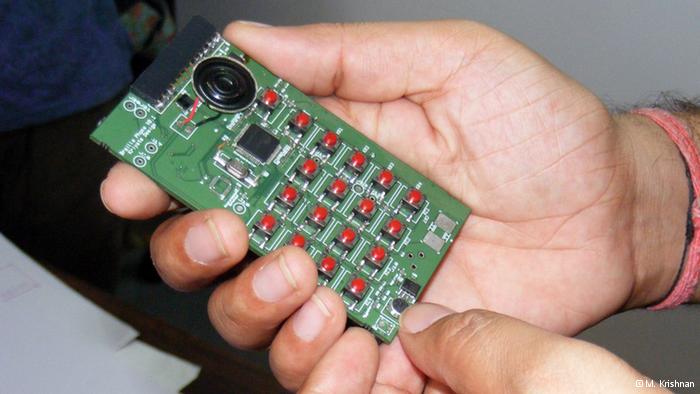Touchscreens have turned phones into computers. But the tech revolution has ignored the needs of the visually impaired. Now, Indian developers are working on the world’s first Braille smartphone.

Sumit Dagar, an interaction design graduate from the National Institute of Design first came up with the idea of developing a Braille smartphone three years ago. In 2012, he won a $50,000 Rolex Award for Enterprise and it gave him and his team that extra impetus to speed up their work.
“I started this project during my masters. It was not part of the curriculum but because of motivation as a designer, and with my technology background, I could clearly see this increasing digital divide between what is available for majority user groups as compared to more marginalized ones,” says Dagar.
The screen of the phone, which has yet to be officially named, consists of a grid of pins. The pins move up and down to form Braille shapes and characters whenever a text message or email arrives.
The Braille smartphone will be able to form icons, shapes, figures, and diagrams in an elevated position, so users can feel them.
Huge potential market
The World Health Organization estimates that nearly 300 million people worldwide are blind or visually impaired.
A quarter of the world’s visually impaired people live in India so the potential market is huge.
Explaining the technology behind the Braille phone, the 29-year-old innovator says there is a huge gap between what is usable for people with vision and for those without. He says design is the only thing that fills the gap between technology and the user.
“There are a couple of technologies we are experimenting with for a production level version,” says Dagar. “One of them is piezoelectric technology, which has been available for these sorts of uses for about 30 years. The most recent technology [we’re looking at] is shape memory alloy based actuation.”
Though the phone is still at the prototype stage, work is progressing at a frenetic pace.
Not just for those left behind
Nishita Gill, who is also part of the design team, believes the product will be a strong competitor to other smartphones.
“Imagine an interface where you don’t have to look at the screen and you can still make a call or you can still message someone,” says Gill. “It’ll definitely be a challenge on the smartphone market.”
And it’s hotly anticipated.
George Abraham, the founding chairman of the World Blind Cricket Council and the Association for Cricket for the Blind in India, sees a bright future for the product.
“There are a number of people who know Braille and for them it will be great. The world is large – there is room for these products and customers will benefit,” says Abraham.
However, Dagar acknowledges his team has big hurdles to overcome before it can launch the Braille smartphone – the main one being how to build the physical surface of the interactive screen. But he is spurred on by his conviction that visually impaired people have been left behind.
“The product revolution that has happened recently is the ‘product innovation revolution’ where design came in and took over technology. That’s where iPhones and other off-age products came in,” says Dagar. “They were essentially using [old] technologies, but they used design in such a way that the user became wowed about the technologies. So this is the revolution that came but it left out marginalized user groups.”
The developers of the Braille smartphone say it will offer rich information sets like graphics, diagrams and spatial orientation, which can be represented using touch interaction.
Dagar has self-funded the project so far. Winning last year’s Rolex Award allowed him to cover startup costs for his company, Kriyate Designs, and operating costs for the first year.
His team hopes to have a basic version of the Braille phone market-ready by early next year and a full, Braille smartphone ready within the next five years.





